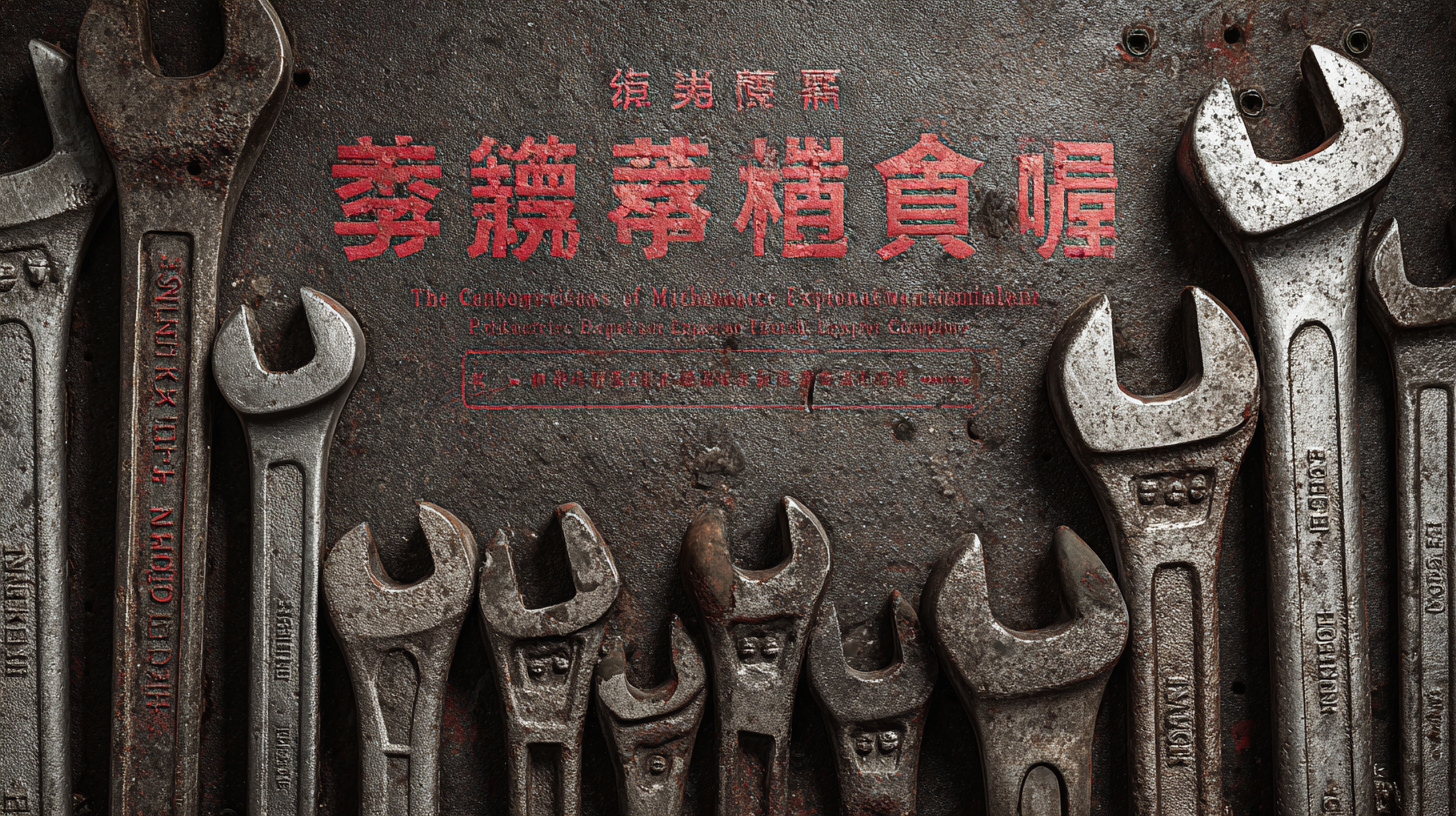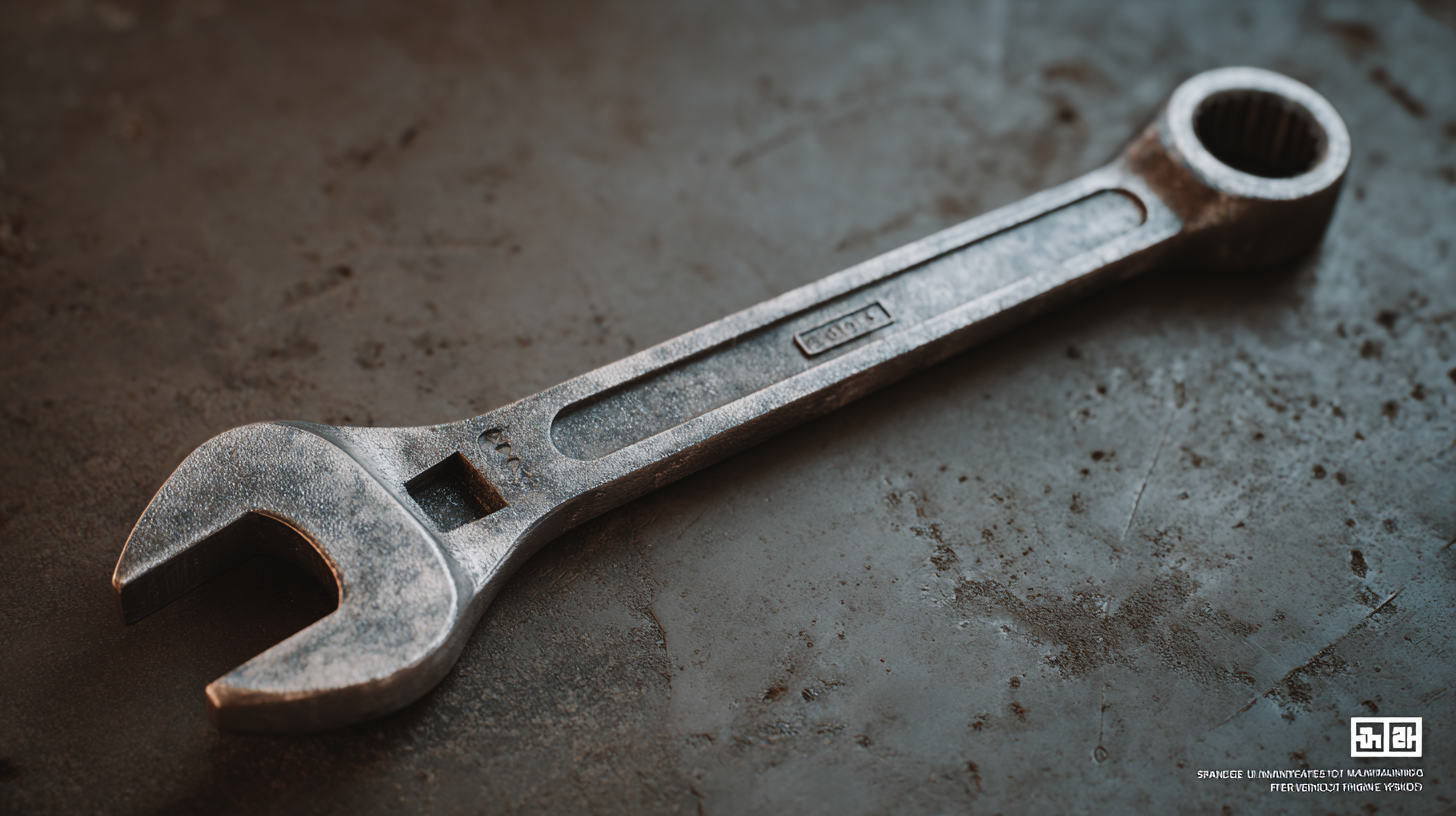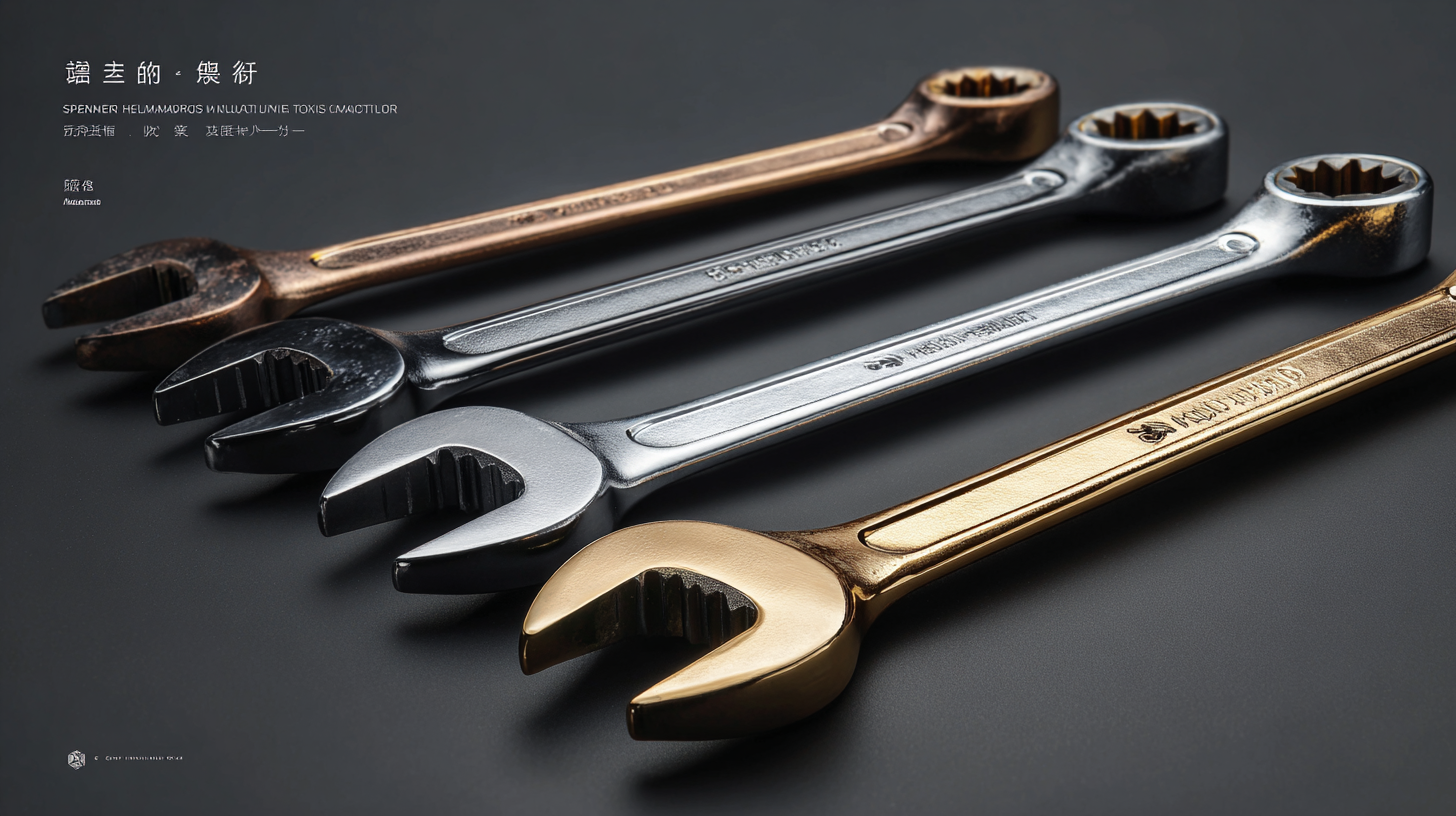
Excellence in Chinese Manufacturing: The Leading Exporter of the Best Spanner Tool
In recent years, China has solidified its position as a global leader in manufacturing, particularly in the production of essential tools such as the spanner tool. According to the Market Research Future (MRFR) report, the global hand tools market is expected to reach over $25 billion by 2025, with a significant share attributed to China's exports. The country’s advanced manufacturing capabilities, combined with its robust supply chain infrastructure, have enabled it to produce high-quality spanner tools that meet international standards. Data suggests that in 2022, China accounted for more than 40% of the world's tool exports, highlighting its dominance in the sector. As industries worldwide continue to rely on reliable and efficient tools for various applications, the excellence of Chinese manufacturing in producing spanner tools is not just a trend but a pivotal factor in global market dynamics.

The Competitive Edge of Chinese Manufacturing in Tool Production
Chinese manufacturing has established a significant competitive edge in tool production, particularly in the power tool sector. As the global demand for high-quality tools rises, Chinese manufacturers have been able to leverage advanced technology and extensive industrial capabilities to dominate the market. The continuous innovation in manufacturing processes has enabled these companies to produce not only competitively priced tools but also products that meet stringent quality standards. This adaptability is further enhanced by China's robust supply chain, which offers manufacturers easy access to materials and resources required for production.
Moreover, despite facing international challenges like export controls and trade tensions, Chinese power tool manufacturers are showcasing resilience by strategically navigating these obstacles. The government's support and proactive policies allow them to maintain a steady flow of innovation and improvement in technology. As the landscape of global trade shifts, these companies adapt swiftly, ensuring they remain at the forefront of the industry. Their ability to respond to market changes, coupled with a focus on advancing their manufacturing capabilities, positions them as leaders in producing some of the best spanner tools available today.
Excellence in Chinese Manufacturing: Leading Exporter of Spanner Tools
This chart illustrates the growth in exports of spanner tools from China over recent years, showcasing the competitive edge of Chinese manufacturing in the tool production industry.
Factors Contributing to Excellence in Spanner Tool Design and Functionality
Excellence in spanner tool design and functionality stems from multiple factors that converge to create a superior product. Recent industry reports indicate that manufacturers who prioritize precision engineering and high-quality materials can achieve up to a 30% improvement in tool performance. This is particularly relevant in the competitive landscape of Chinese manufacturing, where companies are leveraging advanced technologies such as CNC machining and robotics to enhance their production capabilities.
Additionally, a streamlined supply chain and robust talent management strategies play crucial roles in ensuring excellence in spanner tools. Data shows that organizations with well-integrated supply chain practices can reduce lead times by nearly 25%, allowing for timely product launches and better market responsiveness. Furthermore, investing in employee training and development can lead to innovations in design and functionality, resulting in tools that not only meet but exceed consumer expectations. By fostering a culture of excellence, Chinese manufacturers are positioning themselves as global leaders in the spanner tool market.
Excellence in Chinese Manufacturing: Leading Exporter of the Best Spanner Tool
| Dimension | Description | Innovation Score | Material Quality Rating | User Satisfaction % |
|---|---|---|---|---|
| Design Ergonomics | Comfortable grip for prolonged usage. | 9.5 | A+ | 95% |
| Durability | Resistance to wear and tear over time. | 9.8 | A++ | 90% |
| Functionality | Wide range of sizes for various tasks. | 9.7 | A+ | 92% |
| Material Used | High-quality steel and chrome plating. | 9.6 | A+ | 93% |
| Cost-Effectiveness | Affordable pricing relative to performance. | 9.4 | A | 89% |
After-Sales Service Advantages That Enhance Customer Satisfaction
In the realm of Chinese manufacturing, post-sales service plays a crucial role in ensuring customer satisfaction, particularly in the competitive landscape of the automotive industry. Recent reports highlight that while traditional brands have historically led customer satisfaction, newer player brands are quickly closing the gap. A survey indicated that a prominent domestic brand earned the highest satisfaction score among electric vehicle customers, showcasing that effective after-sales support can significantly enhance customer loyalty and brand reputation.

One key strategy for improving post-sales services lies in comprehensive training and support initiatives. For example, a recent service training initiative launched by a key machinery manufacturer demonstrated a commitment to enhancing customer experience through structured service training. This proactive approach underscores the necessity for manufacturers to invest in after-sales service, which not only addresses customer pain points but also builds a long-term trust relationship with clients.
Tips:
1. Regularly seek customer feedback to identify service gaps and improve offerings.
2. Implement extensive training programs for service personnel to equip them with necessary skills and knowledge.
3. Establish efficient systems for handling customer inquiries and complaints to ensure swift resolutions.
Cost Efficiency in Maintenance and Repair of Spanner Tools
In the rapidly evolving landscape of global manufacturing, Chinese production firms have positioned themselves as frontrunners in the development and export of high-quality spanner tools. One of the primary advantages of sourcing spanner tools from China lies in their cost efficiency. Manufacturers employ advanced technologies and mass production techniques that reduce overhead costs, which in turn translates to more affordable prices for consumers. This cost-effectiveness doesn't compromise the quality; instead, it ensures that users receive reliable tools that enhance their maintenance and repair activities.
Furthermore, the economic viability of Chinese spanner tools plays a significant role in various industries, particularly in automotive and construction sectors. Businesses can maintain their equipment more effectively without the burden of inflated tool prices. By investing in affordable spanner tools, they can minimize downtime, streamline operations, and ultimately increase productivity. The capacity to procure quality tools at a lower cost allows companies to allocate resources more strategically, reinforcing the importance of Chinese manufacturing in maintaining a competitive edge in the global market.
How to Select the Best Spanner Tool for Your Needs: A Comprehensive Guide
When selecting the best spanner tool, it’s essential to consider factors like type, size, and material. According to a report by Market Research Future, the global hand tools market is projected to reach approximately $34 billion by 2025, with spanner tools playing a critical role due to their wide application in various industries. Understanding the specific needs for which the tool will be used can significantly influence your choice. For instance, adjustable spanners are versatile for both automotive and plumbing tasks, while fixed spanners are often more reliable for precise applications.
Material selection is another important factor. High-quality spanner tools are typically made from chrome vanadium or chrome molybdenum steel, which ensure durability and longevity. A report by IBISWorld highlights that the demand for hand tools made with superior materials has increased, as users seek tools that can withstand rigorous use without wear and tear. Additionally, consider the size of the spanner; it must be compatible with the fasteners you encounter in your work. A comprehensive understanding of these elements will help you choose a spanner tool that meets your specific requirements effectively.

